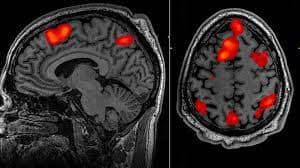How to Interpret Functional MRIs 3 Essential Techniques
Understanding functional MRIs (fMRI) is crucial for diagnosing and researching brain activity effectively. This guide introduces you to the fMRI's advantages over traditional MRIs and explains three key techniques for interpreting these detailed images.
Understanding Functional MRIs
A functional MRI provides a comprehensive view of brain activity, offering detailed images of neural pathways and functional connectivity. This section outlines what functional MRIs are and their advantages for diagnosing and researching various brain conditions.

What Do Functional MRIs Show?
- Brain Activity: Superior imaging of brain function by measuring changes in blood flow.
- Neural Pathways: Clear visualization of neural connections and pathways.
- Functional Connectivity: Detects how different brain regions communicate.
- Disease Detection: More effective in identifying abnormalities related to brain activity.
When Will You Get One?
- Neurological Symptoms: Such as seizures or cognitive deficits indicating abnormal brain activity.
- Pre-surgical Planning: Provides detailed brain activity maps for surgical planning.
- Research Purposes: Ideal for studying brain function and disorders.
- Monitoring Treatment Effects: Useful for assessing the effectiveness of treatments on brain activity.
Techniques to Interpret Functional MRIs
Interpreting functional MRIs involves a deeper understanding of advanced imaging techniques. Here are three techniques for professionals at different levels of expertise.
1. Utilizing X-ray Interpreter
X-ray Interpreter now extends its AI-driven analysis to fMRI images. The process ensures precision:
- Registration: Register on X-ray Interpreter to access AI analysis for fMRIs.
- Uploading fMRIs: Upload your functional MRI images.
- Reviewing Interpretation: Receive the AI-generated interpretation and download your report.
- Professional Consultation: Always advisable to consult with medical professionals for comprehensive understanding.
Please check out our get started guide.
2. Using ChatGPT Plus
ChatGPT Plus now supports fMRI image analysis with its latest GPT-4V model, offering detailed and interactive insights:
- Subscription: Subscribe to ChatGPT Plus for advanced image analysis features.
- Uploading fMRIs: Interface with GPT-4V on OpenAI to upload your fMRI images.
- Requesting Analysis: Engage with the model for a thorough analysis.
- Review and Confirmation: Assess and refine the analysis as needed.
- Professional Validation: Validation by medical experts is recommended.
Read more on our post about using ChatGPT Plus for MRI interpretation.
Alternatively, as several other AI models with vision capabilities emerge, you can also try other models, such as Grok by xAI, Claude by Anthropic, Gemini by Google Deepmind.
3. Mastering fMRI Interpretation Yourself
For healthcare professionals aiming to enhance their fMRI reading skills, self-learning is invaluable:
- Education: Pursue advanced training in fMRI interpretation.
- Practice: Regular practice under expert guidance.
- Resources: Utilize advanced imaging books and online courses.
- Feedback: Seek feedback to refine skills.
- Continuous Learning: Engage in ongoing education to stay current with imaging techniques.
Recommended Resources for Self-Learning:
-
Functional Magnetic Resonance Imaging (fMRI) - NCBI: Comprehensive review of fMRI, covering techniques, applications, and advancements in the field.
-
Functional MRI (fMRI): What It Is, Purpose, Procedure & Results - Cleveland Clinic: Detailed information on fMRI, including its purpose, procedure, and interpreting results.
-
fMRI Tutorial #3: Looking at the Data - Andy's Brain Book: A step-by-step guide to inspecting and analyzing fMRI data, ideal for hands-on learners.
Comparative Analysis
Choosing the right technique for interpreting functional MRIs is vital for accurate diagnosis. This section compares the three methods:
| Criteria | X-ray Interpreter | ChatGPT Plus | Self-Reading |
|---|---|---|---|
| Accuracy | High (AI-based)1 | High (AI-based)1 | Varies (Skill-dependent) |
| Ease of Use | Easy | Moderate | Challenging |
| Cost | Starting from $2.50 per image | $20 per month | Free (excluding educational costs) |
| Time Efficiency | Fast | Moderate to Fast | Slow to Moderate |
| Learning Curve | Low | Low to Moderate | High |
| Additional Resources | Provided | Partially Provided (through OpenAI) | Self-sourced |
Each method has its strengths and weaknesses, with AI options providing rapid and precise interpretations, while self-reading encourages in-depth learning for medical professionals.
Conclusion
Functional MRI interpretation is critical for diagnosing complex brain conditions and advancing research. This guide presents three techniques suited to different professional needs and skill levels. AI methods offer quick, precise interpretations, while self-learning is geared towards those seeking in-depth knowledge.
When selecting a technique, consider your level of expertise, the need for timely interpretation, and the resources available. Ethical and legal standards must always be maintained to ensure patient safety and confidentiality.
Resources and Further Learning
For further exploration and understanding of functional MRI interpretation, consider the following resources:
-
Functional MRI (fMRI) of the Brain - RadiologyInfo.org: Detailed overview of fMRI, its purpose, procedure, and interpretation of results.
-
Functional MRI of the Brain - Yale Medicine: Comprehensive guide on fMRI, highlighting its applications in brain surgery and research.
-
What is fMRI? - UC San Diego Center for Functional MRI: In-depth resource on the principles and applications of fMRI in research.